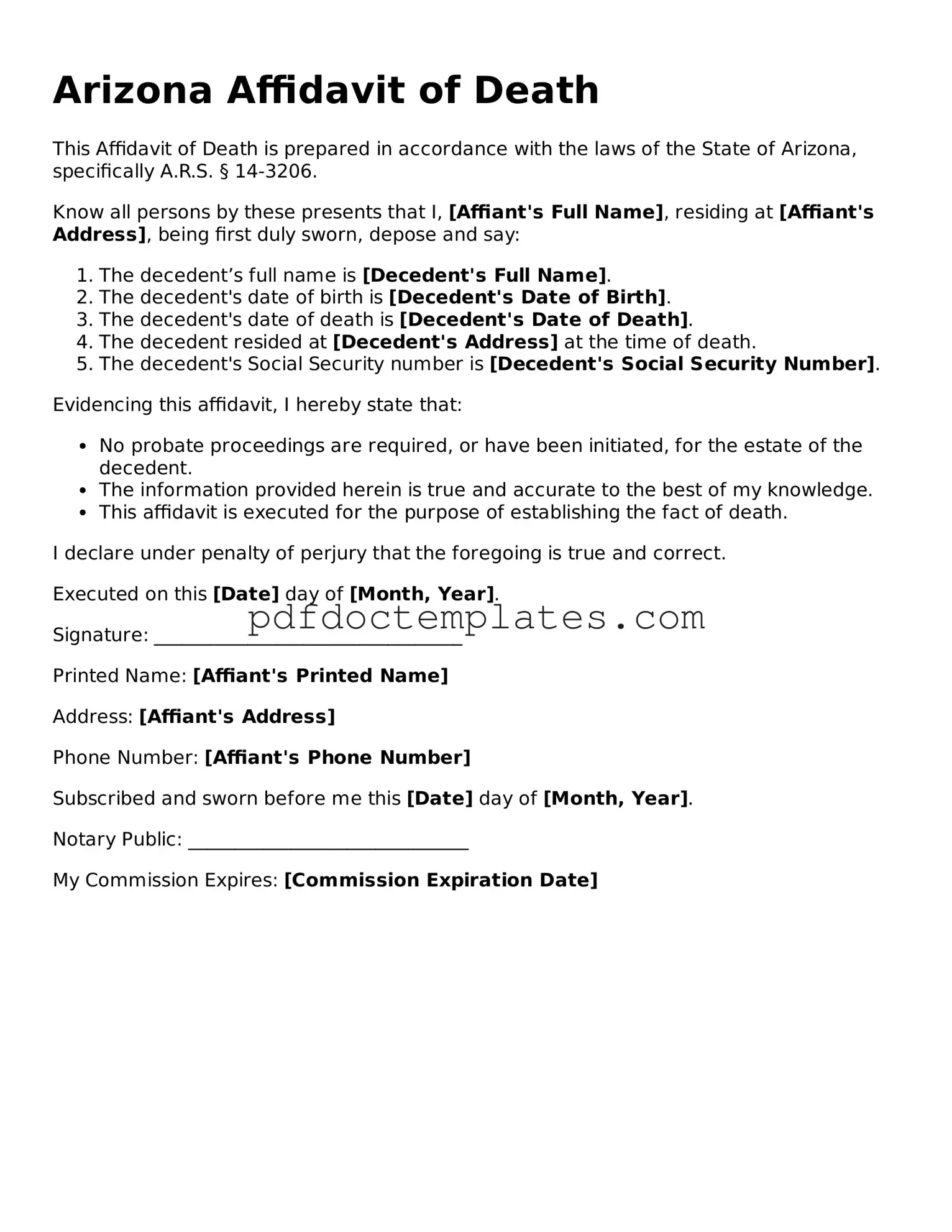Arizona Affidavit of Death
This Affidavit of Death is prepared in accordance with the laws of the State of Arizona, specifically A.R.S. § 14-3206.
Know all persons by these presents that I, [Affiant's Full Name], residing at [Affiant's Address], being first duly sworn, depose and say:
- The decedent’s full name is [Decedent's Full Name].
- The decedent's date of birth is [Decedent's Date of Birth].
- The decedent's date of death is [Decedent's Date of Death].
- The decedent resided at [Decedent's Address] at the time of death.
- The decedent's Social Security number is [Decedent's Social Security Number].
Evidencing this affidavit, I hereby state that:
- No probate proceedings are required, or have been initiated, for the estate of the decedent.
- The information provided herein is true and accurate to the best of my knowledge.
- This affidavit is executed for the purpose of establishing the fact of death.
I declare under penalty of perjury that the foregoing is true and correct.
Executed on this [Date] day of [Month, Year].
Signature: _________________________________
Printed Name: [Affiant's Printed Name]
Address: [Affiant's Address]
Phone Number: [Affiant's Phone Number]
Subscribed and sworn before me this [Date] day of [Month, Year].
Notary Public: ______________________________
My Commission Expires: [Commission Expiration Date]
